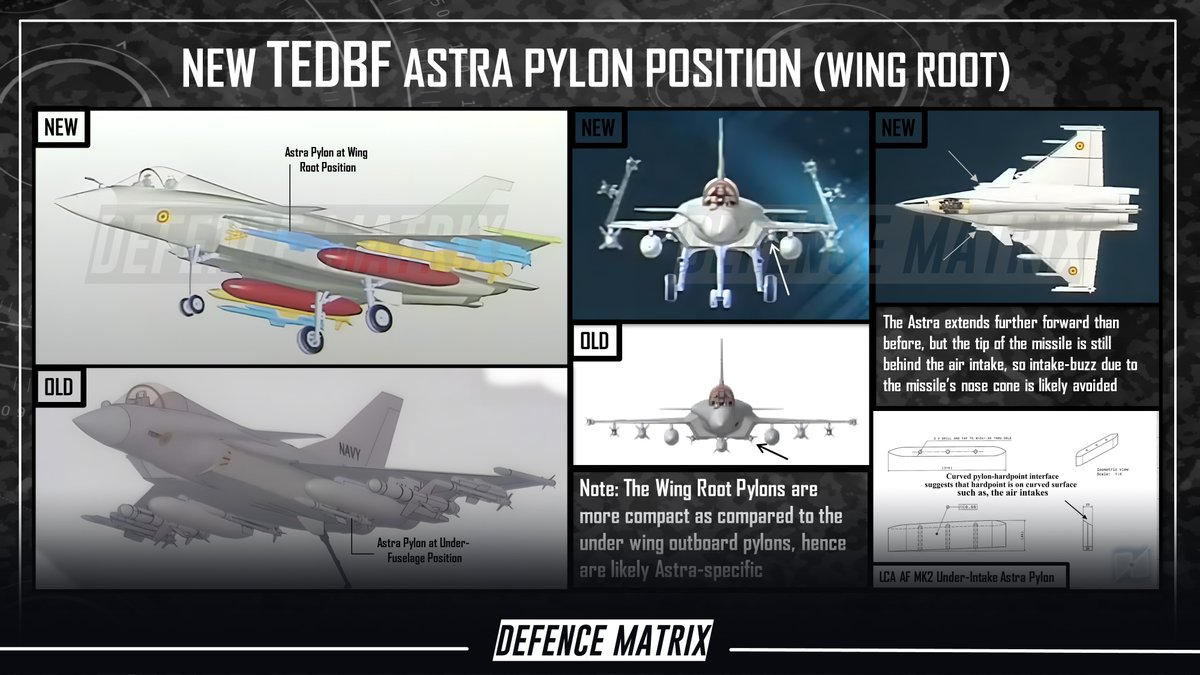- Views: 2K
- Replies: 19

Recent visuals from October 2023 reveal a significant design modification to India's Twin Engine Deck-Based Fighter (TEDBF) prototype. The Astra missile pylons, previously situated under the fuselage, have been relocated to the wing root position.
This strategic adjustment, while raising questions, offers several potential advantages for the aircraft's performance, operational effectiveness, and overall design.
Structural Integrity and Load Distribution
One of the primary motivations behind the pylon relocation is likely related to structural integrity and load distribution.The wing root, a robust part of the aircraft structure, can withstand greater stress and load. By shifting the missile pylons to this position, the stress on the fuselage is reduced, enhancing the TEDBF's durability and lifespan.
Additionally, this change maintains an optimal center of gravity, contributing to improved flight stability and control.
Aerodynamic Efficiency
Aerodynamic efficiency is paramount for fighter aircraft, as it directly affects speed, fuel efficiency, and maneuverability. Under-fuselage pylons can increase drag, particularly when carrying multiple missiles.By moving the Astra pylons to the wing roots, the TEDBF achieves a cleaner aerodynamic profile, reducing drag and potentially improving speed and fuel efficiency.
This change also maintains the aircraft's agility, a critical factor in both air-to-air combat and evasion maneuvers.
Weapon System Integration and Operational Effectiveness
The pylon relocation may also be aimed at enhancing weapon system integration and operational effectiveness.Wing root positions can provide better missile launch dynamics, ensuring reliable separation and ignition. Furthermore, this configuration facilitates easier maintenance and quicker re-arming, as the wing roots are more accessible than under-fuselage pylons.
The change also allows for a more versatile loadout, enabling the TEDBF to carry a wider array of weapons and sensors.
Payload Management and Carrier Operations
The TEDBF is designed for aircraft carrier operations, where payload management is crucial due to limited space and the need for quick turnaround times.By placing the Astra missiles on the wing roots, additional payloads like fuel tanks or other munitions can be carried under the fuselage, maximizing the aircraft's operational capabilities.
While the TEDBF is still under development, these recent design modifications underscore India's commitment to developing a cutting-edge, multi-role fighter aircraft capable of meeting the evolving demands of modern naval warfare.
